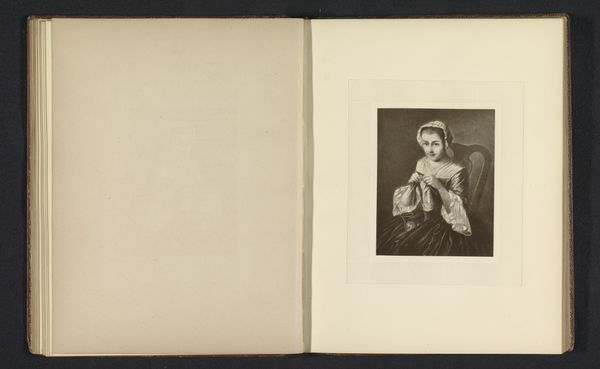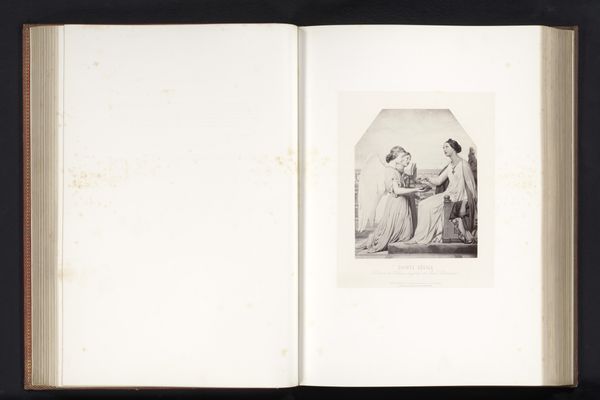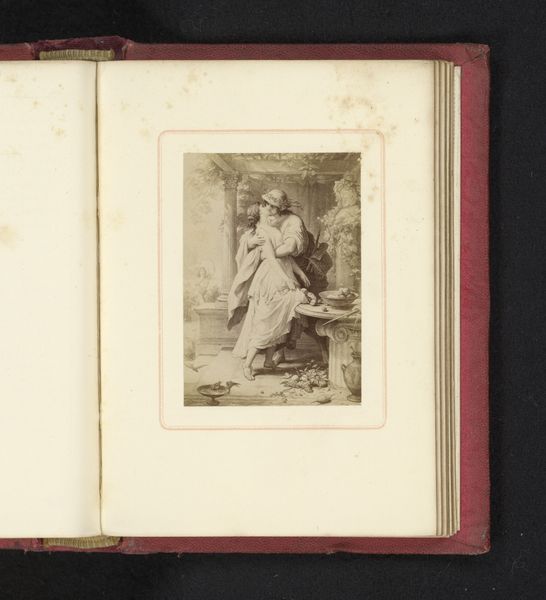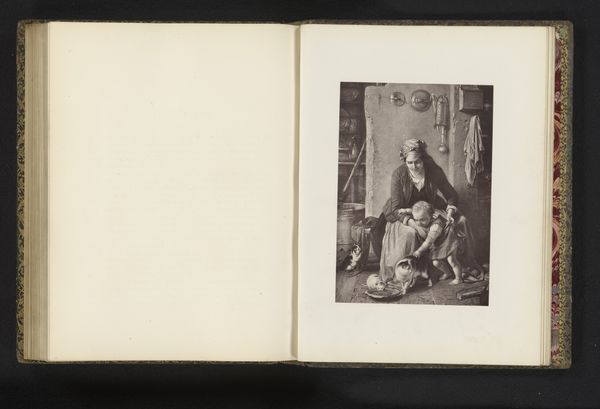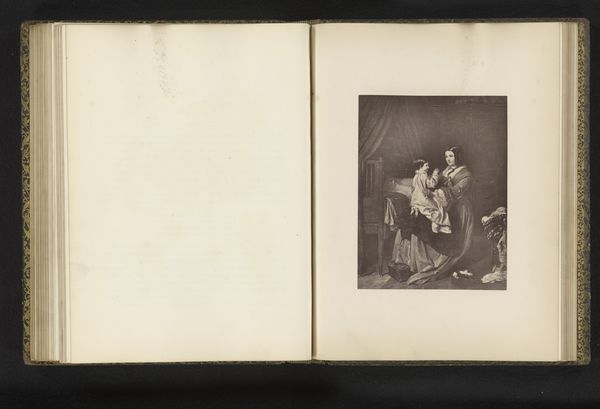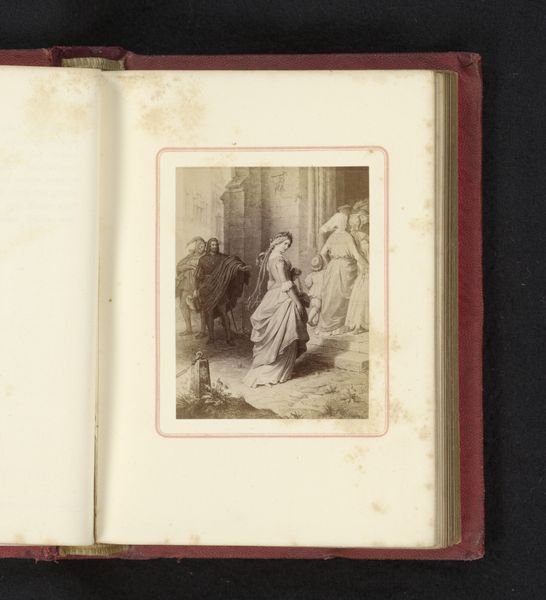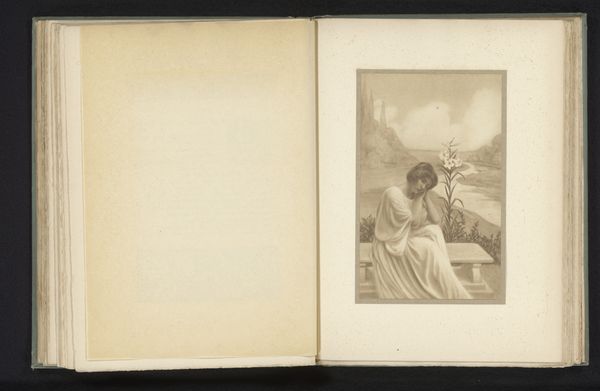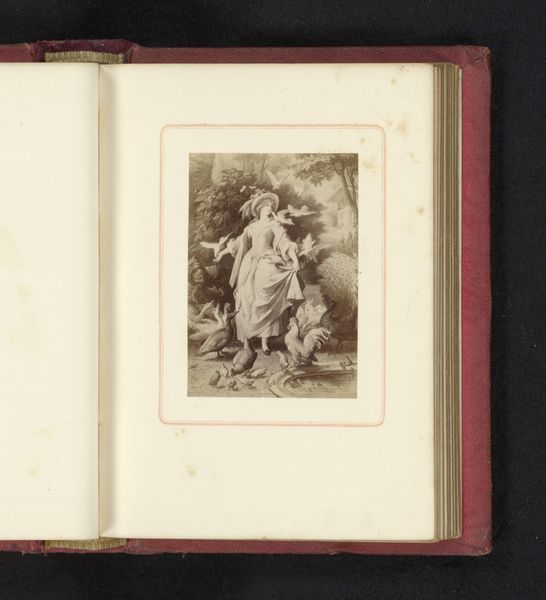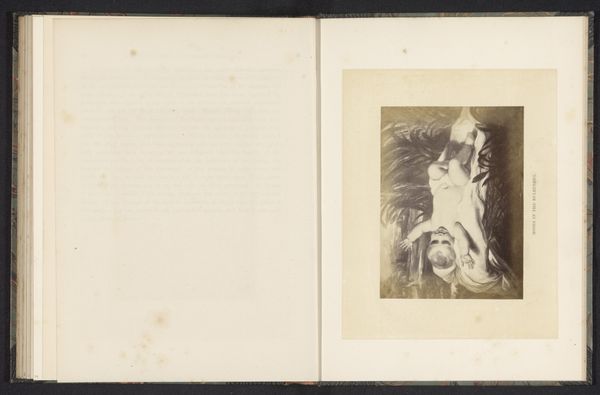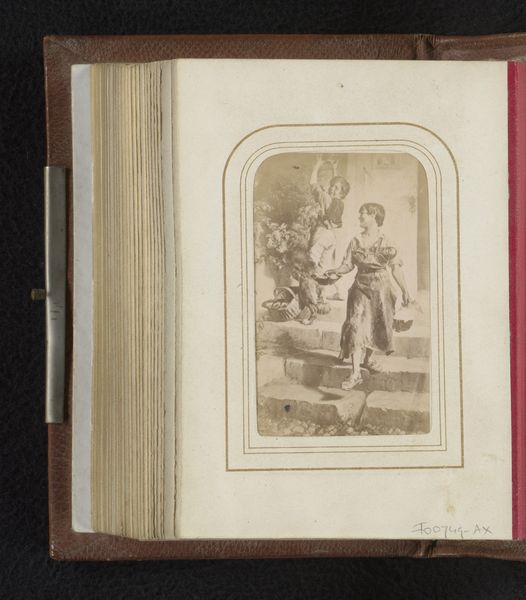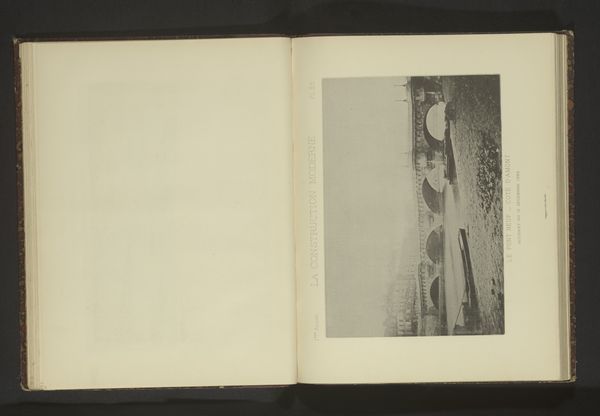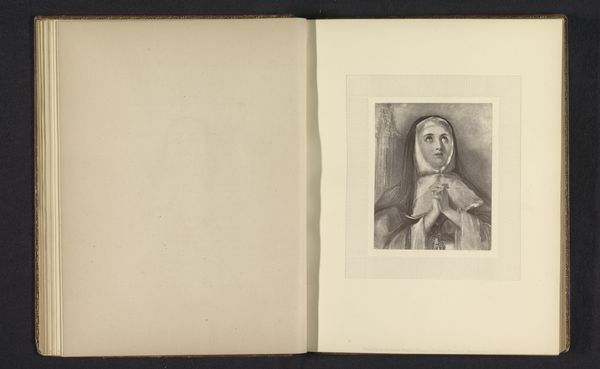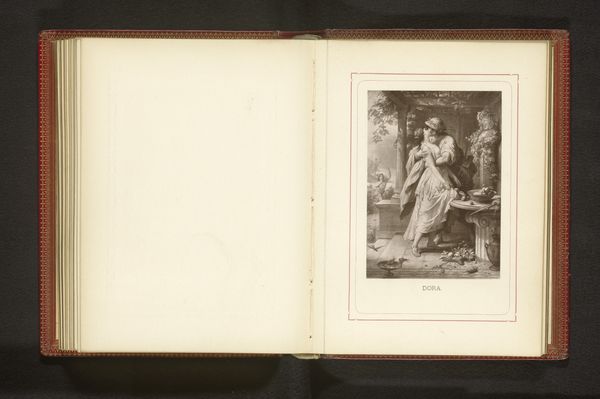
#
portrait
#
flower
#
history-painting
#
realism
Dimensions: height 168 mm, width 120 mm
Copyright: Rijks Museum: Open Domain
Editor: This is La Glycine, made before 1872 by an anonymous artist, currently residing in the Rijksmuseum. It’s a very interesting piece; I’m immediately struck by the subject's melancholic expression. It’s as if she's weighed down, even adorned with beautiful wisteria flowers. How do you interpret this work? Curator: I see a loaded representation of femininity intertwined with the symbolism of wisteria. During this period, wisteria, or glycine in French, often symbolized grace and tenderness, but also fragility and even dependence. Given the context, doesn't her pensive gaze seem to challenge those traditional notions? Consider also the objectification of women in art – is she a celebration or a commentary? Editor: That's a really insightful point. The contrast between the wisteria's delicate beauty and her somewhat troubled expression suggests that it is challenging those ideas, questioning societal expectations of women. What do you mean about "the objectification of women in art?" Curator: From the male gaze, artworks would often focus on the depiction of the idealized feminine form, silencing female subjectivity. Look closely; is her posture passive, or is there a strength in her direct gaze? Consider also who this piece was made *for* – what audience? The answers to those questions shift our understanding of the artist's aims. Editor: I see what you mean; it is a very direct gaze. I guess I was focusing on her posture too much. She's meeting our eyes, definitely not shy. Curator: Exactly! That changes the dynamic, right? I think it's important for us to continue asking these questions when analyzing historical artworks: How do depictions of gender, race, and class uphold or challenge power structures within specific cultural moments? Editor: Absolutely. Seeing it through that lens makes it so much richer than just a pretty portrait with flowers. Thank you! Curator: And thank you. By interrogating these visual texts, we learn a great deal about the social fabric of their time – and ours.
Comments
No comments
Be the first to comment and join the conversation on the ultimate creative platform.
